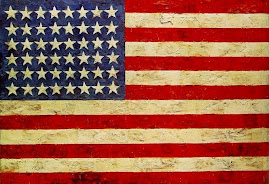
I know no class of my fellowmen, however just, enlightened, and humane, which can be wisely and safely trusted absolutely with the liberties of any other class. - Frederick Douglass
The institution of slavery in the Unitied States in spite of it's attachment to the ideals of democracy and liberty is perhaps one of the most perplexing, shameful and painfully enduring periods of US history. This week's blog asks that you examine analytical sources as well as first-hand accounts of the slave experience in order to gain a more comprehensive understanding of life in the Antebellum south and the conditions that led to mass upheval, the US Civil War and, ultimately, the abolition of slavery.
1) Read Chapter 9 of Howard Zinn’s People’s History of the United States at:
http://www.historyisaweapon.com/defcon1/zinnslaem10.html
Post two comments and/or questions on the major themes presented in this chapter.
2) Actively read selections from two Slave Accounts from the archive on Spartacus online archive:
http://www.spartacus.schoolnet.co.uk/USAslavery.htm
(Be sure that your choices are accounts of enslaved people living in the Unites States)
3) Select at least three compelling quotes to reflect on in your blog. You may free-response by saying what the quote reminds you of or makes you wonder, or draw out themes and parallels about the slave experience in the United States. Try to make allusion’s to Zinn’s key ideas in your reflections.
4) Finally, Explain why you believe so many enslaved individuals decided to write narratives of their experiences with slavery? What is the purpose and power of examining primary sources like these while studying the institution of slavery in the American south?
This post should be at least 400 words. Please respond to at least one other students’ post for this assignment.
Due Sunday, 12/30 by 7:00 p.m.
The institution of slavery in the Unitied States in spite of it's attachment to the ideals of democracy and liberty is perhaps one of the most perplexing, shameful and painfully enduring periods of US history. This week's blog asks that you examine analytical sources as well as first-hand accounts of the slave experience in order to gain a more comprehensive understanding of life in the Antebellum south and the conditions that led to mass upheval, the US Civil War and, ultimately, the abolition of slavery.
1) Read Chapter 9 of Howard Zinn’s People’s History of the United States at:
http://www.historyisaweapon.com/defcon1/zinnslaem10.html
Post two comments and/or questions on the major themes presented in this chapter.
2) Actively read selections from two Slave Accounts from the archive on Spartacus online archive:
http://www.spartacus.schoolnet.co.uk/USAslavery.htm
(Be sure that your choices are accounts of enslaved people living in the Unites States)
3) Select at least three compelling quotes to reflect on in your blog. You may free-response by saying what the quote reminds you of or makes you wonder, or draw out themes and parallels about the slave experience in the United States. Try to make allusion’s to Zinn’s key ideas in your reflections.
4) Finally, Explain why you believe so many enslaved individuals decided to write narratives of their experiences with slavery? What is the purpose and power of examining primary sources like these while studying the institution of slavery in the American south?
This post should be at least 400 words. Please respond to at least one other students’ post for this assignment.
Due Sunday, 12/30 by 7:00 p.m.








